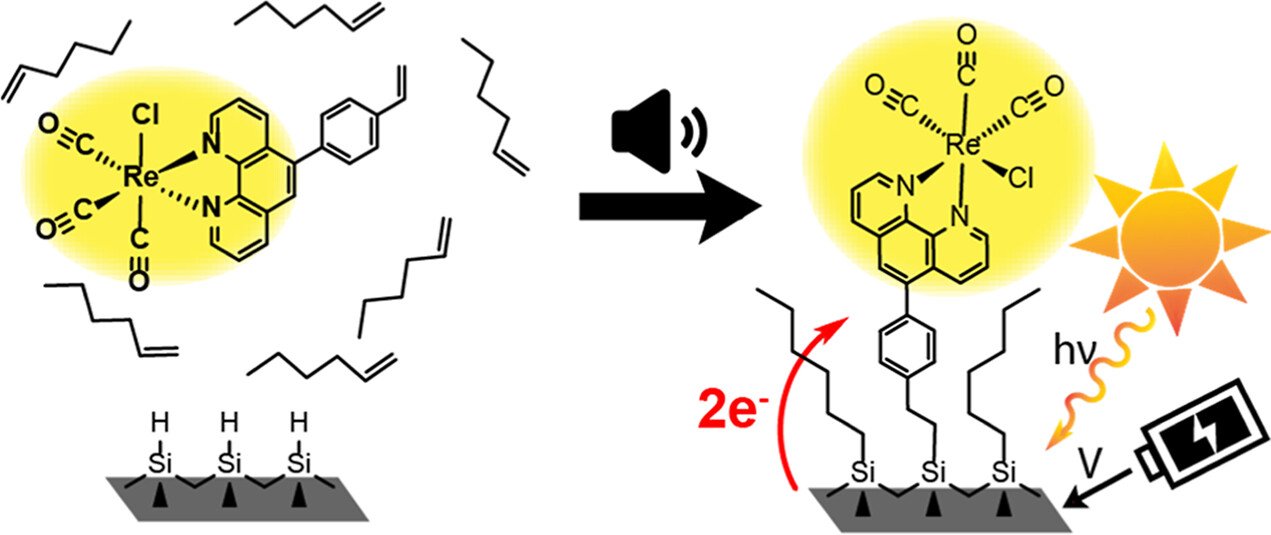Surface Immobilization of a Re(I) Tricarbonyl Phenanthroline Complex to Si(111) through Sonochemical Hydrosilylation
A sonochemical-based hydrosilylation method was employed to covalently attach a rhenium tricarbonyl phenanthroline complex to silicon(111). fac-Re(5-(p-Styrene)-phen)(CO)₃Cl (5-(p-styrene)-phen = 5-(4-vinylphenyl)-1,10-phenanthroline) was reacted with hydrogen-terminated silicon(111) in an ultrasonic bath to generate a hybrid photoelectrode. Subsequent reaction with 1-hexene enabled functionalization of remaining atop Si sites. Attenuated total reflectance–Fourier transform infrared spectroscopy confirms attachment of the organometallic complex to silicon without degradation of the organometallic core, supporting hydrosilylation as a strategy for installing coordination complexes that retain their molecular integrity. Detection of Re(I) and nitrogen by X-ray photoelectron spectroscopy (XPS) further support immobilization of fac-Re(5-(p-styrene)-phen)(CO)₃Cl. Cyclic voltammetry and electrochemical impedance spectroscopy under white light illumination indicate that fac-Re(5-(p-styrene)-phen)(CO)₃Cl undergoes two electron reductions. Mott–Schottky analysis indicates that the flat band potential is 239 mV more positive for p-Si(111) co-functionalized with both fac-Re(5-(p-styrene)-phen)(CO)₃Cl and 1-hexene than when functionalized with 1-hexene alone. XPS, ultraviolet photoelectron spectroscopy, and Mott–Schottky analysis show that functionalization with fac-Re(5-(p-styrene)-phen)(CO)₃Cl and 1-hexene introduces a negative interfacial dipole, facilitating reductive photoelectrochemistry.
Huffman, B. L.; Bein, G. P.; Atallah, H.; Donley, C. L.; Alameh, R. T.; Wheeler, J. P.; Durand, N.; Harvey, A. K.; Kessinger, M. C.; Chen, C. Y.; Fakhraai, Z.; Atkin, J. M.; Castellano, F. N.; Dempsey, J. L. Surface Immobilization of a Re(I) Tricarbonyl Phenanthroline Complex to Si(111) through Sonochemical Hydrosilylation. ACS Appl. Mater. Interfaces 2023, 15, 984−996. https://doi.org/10.1021/acsami.2c17078

